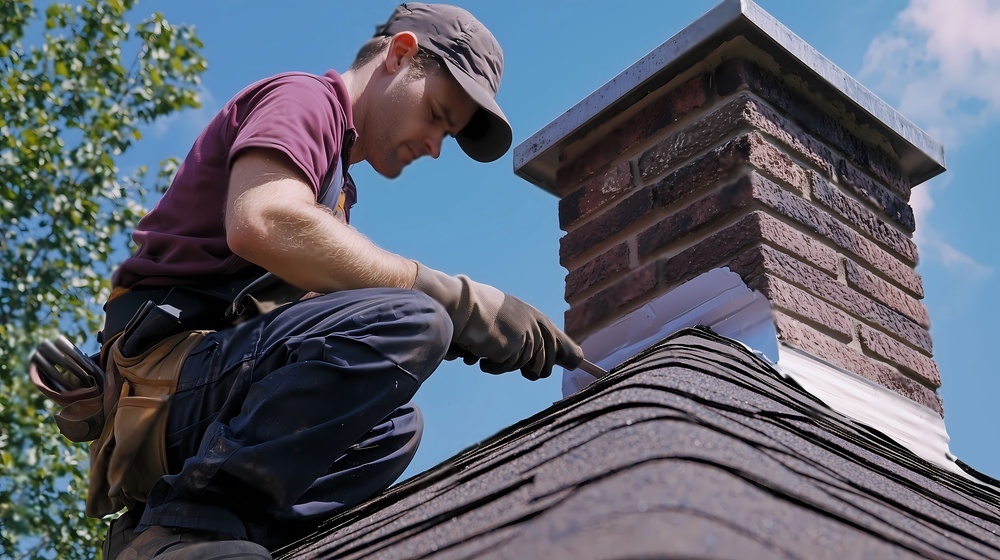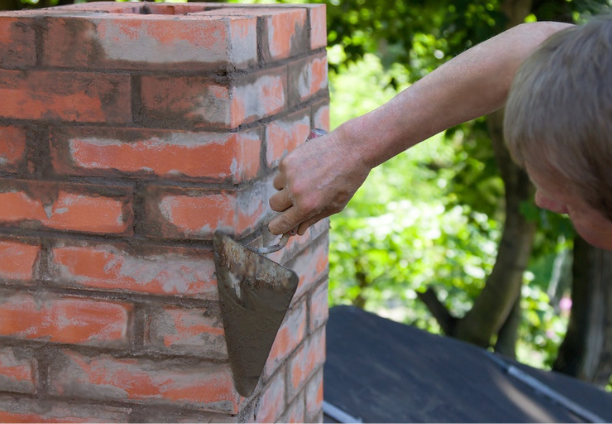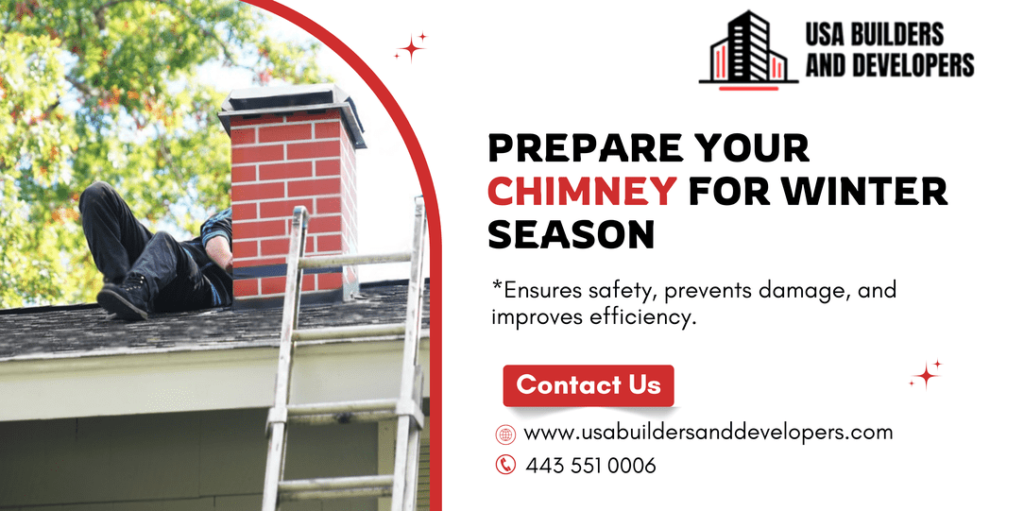Before winter arrives, it’s time to make sure your chimney is ready to keep you warm and safe. Although chimneys may look sturdy, they need attention, especially if they haven’t been used for months. Preparing your chimney now can help avoid problems later—like smoke filling your room or, worse, a dangerous chimney fire. Here’s an easy guide on how to prepare your chimney for the chilly season ahead.
Why Chimney Care Is So Important
A well-functioning chimney isn’t just about coziness; it’s also about safety. When you use a fireplace or wood stove, gases like carbon monoxide are created. The chimney’s job is to safely release these gases outdoors. Without proper care, a blocked or damaged chimney could allow harmful gases to build up indoors. So, prepping your chimney for winter isn’t just about staying warm—it’s also essential for keeping everyone in your home safe.
1. Start with a Chimney Inspection 🔍
The first step to a winter-ready chimney is getting an inspection. A professional inspection checks for any blockages, cracks, or dangerous creosote build-up. Creosote is a sticky black residue from burning wood, and when too much builds up, it can be a major fire hazard. A qualified professional can spot small issues before they become costly problems, so this step is key.
Ideally, you should schedule an inspection before winter sets in. This yearly inspection ensures that your chimney is ready for frequent use. Even if your fireplace looks fine, some issues can go unnoticed without an inspection, like hidden blockages or minor cracks.


2. Clear Out the Creosote
When wood burns, it leaves behind creosote. This sticky, flammable substance coats the inside of the chimney. Too much creosote buildup is dangerous.
- Why it’s a hazard: Creosote can ignite, causing a chimney fire.
- Fun fact: Creosote smells smoky and can make your house smell even without a fire burning.
Pro Tip: Don’t clean creosote yourself. Call a professional for a safe, thorough job.
3. Check the Chimney Cap 🧢
The chimney cap is a small cover that sits on top of the chimney. It keeps out rain, leaves, and even animals. If you don’t have one or it’s damaged, you’ll want to get it fixed.
- Why you need it: A cap stops things like birds, squirrels, and bats from getting inside.
- Replace if needed: Chimney caps can get rusty or damaged over time.
4. Inspect for Cracks and Leaks
After a long year of no use, cracks can form in the chimney. These cracks allow cold air, water, or smoke to sneak into your home. So, after cleaning, it’s time for an inspection.
- Check the outside of your chimney. Look for gaps, missing bricks, or rust on the metal parts.
- Inspect from the inside. If you see loose bricks or damaged mortar (the stuff holding bricks together), repairs may be needed.
5. Remove Leaves and Debris 🍂
Leaves, twigs, and other bits often gather around the chimney top. This debris can block airflow, causing smoke to stay inside your home. Keeping the area clear helps your chimney function better.
- Simple fix: Just sweep around and remove any debris.
- Why it’s essential: A clear chimney works better and reduces the risk of a smoky home.
6. Get Your Chimney Swept by a Professional
A chimney sweep removes soot, creosote, and any other residues inside. It’s a must-do step to ensure your chimney is clean and safe.
- When to do it: Once a year, ideally before the winter season.
- Why it’s important: Sweeping makes sure your chimney draws up smoke correctly and safely.
7. Install or Check the Chimney Liner
A chimney liner protects the walls of your chimney and helps guide smoke out of your home. Many chimneys already have one, but it can wear down over time.
- Types of liners: You’ll find metal, clay, or cement liners. Metal lasts longer but costs more.
- What it does: A liner adds an extra layer of safety, preventing damage to your chimney’s structure.
8. Test Your Fireplace
After you’ve prepped your chimney, it’s time to test your fireplace. Light a small fire and observe the smoke flow. A good chimney should carry the smoke up and out efficiently, without any backflow. If you notice smoke entering the room, it might mean that there’s still a blockage or airflow issue.
Testing your fireplace not only confirms that your chimney is clear but also gives you a sense of how well it’s functioning. Start with dry wood to reduce smoke and buildup, and always keep an eye out for any odd odors or unusual smoke patterns.
Schedule Regular Maintenance
Keeping your chimney in top shape doesn’t end with one inspection. Chimneys need care year-round to stay safe and functional. USA Builders and Developers recommend regular upkeep to avoid costly repairs.
- Make it a habit: Set reminders for inspections and sweeps.
- Long-term benefits: A well-maintained chimney has a longer lifespan and lower risk of issues.
Conclusion
Once your chimney is prepared, you’re ready to enjoy cozy fires throughout the winter. Remember: regular maintenance makes a big difference in both warmth and safety. Following these steps will give you a well-functioning, clean, and safe chimney, letting you relax and enjoy the warmth of your fireplace all season long.
Contact Us
Need help preparing your chimney for winter? Contact USA Builders and Developers for expert inspections, repairs, and chimney services. Keep your home safe and cozy this season—reach out us at 443-551-0006 today!

